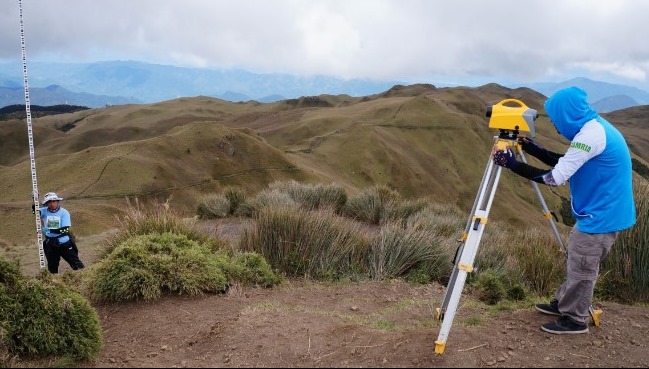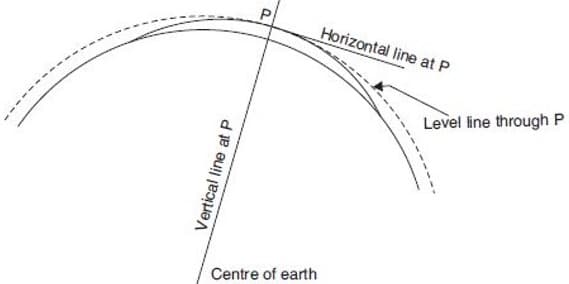Temporary Bench Mark
Various terms are used in leveling which must be understood clearly before starting surveying. Leveling is conducted in the field to know the elevation difference between two points. To find the elevation difference, at least the elevation of one point must be known.
What if the elevations are not known or how to proceed with leveling with unknown elevation points? It is not a big task if basic terms of leveling are known. So, one must know these basic terms before studying the art of leveling.

Terms Used in Leveling
The general terms used in leveling are:
- Vertical line
- Horizontal line
- Level surface
- Datum
- Benchmark
- Mean sea level
- Reduced level
Vertical Line
It is the line which is indicated by plumb at required station. So, this is also called as plumb line. It’s just decided based on the consideration of earth’s gravity.
Vertical line connects the station point to the center of the earth. A plumb is released from the instrument height with the help of thread and instrument is set up at that point as its center.
Horizontal Line
Horizontal line is the line of sight of instrument which is tangential to the level surface and It is perpendicular the plumb line. The surface along horizontal line of sight is called as horizontal surface.

Level Surface
Level surface is the continuous surface parallel to the mean spheroid of the earth. The line representing the level surface is termed as level line.
The level line makes right angles to the vertical line or plumb line at any point. It means the any point on level line is equidistance from the center of earth. Even though it is a curved surface, it is considered as plane surface for smaller area works.